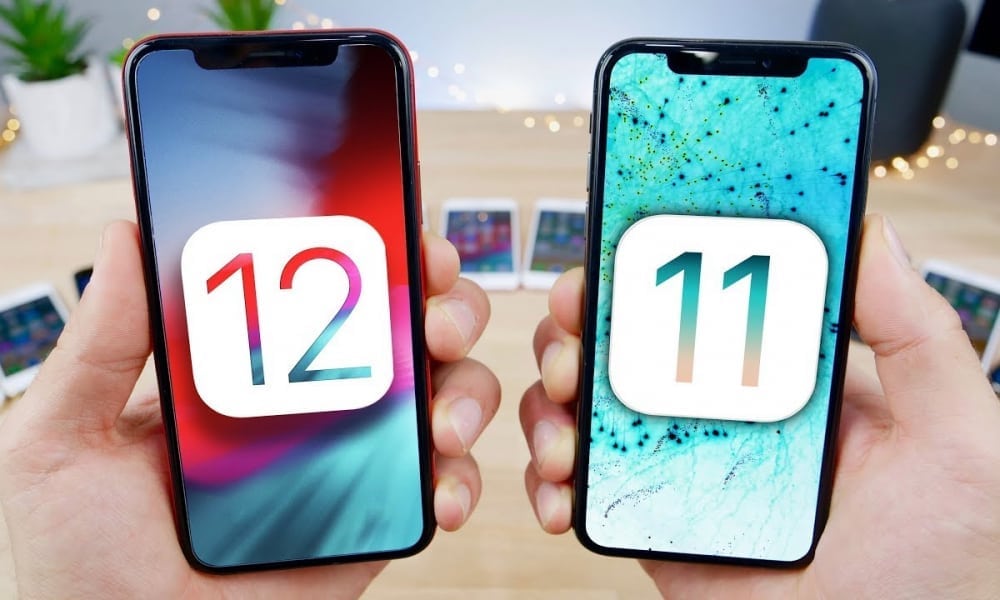How to Downgrade from an iOS 12 Beta to iOS 11
 Credit: EverythingApplePro
Credit: EverythingApplePro
Toggle Dark Mode
We don’t generally recommend that users install beta software on their primary devices. Even the best beta software can be buggy and could render your device relatively unusable in the worst case scenarios.
Of course, this advice isn’t that great if you already have one of the iOS 12 betas installed on your device.
For the most part, you should be fine until the final version launches in the fall. But if you’d like to downgrade back to iOS 11 for any reason, here’s how.
Note: This article assumes that you have an archived iTunes or iCloud backup from before you installed the iOS 12 beta. If you don’t, then you won’t be able to get any of your device’s data back. This is precisely why we recommend backing up before installing any new software on your iPhone or iPad.
If you don’t have any backups from iOS 11, then you might not have many options if you’re deadset on downgrading back to the older software.
If you proceed through putting your device into Recovery mode and restoring iOS 11, you’ll lose quite a bit of your data and all of your non-native apps.
You probably will be able to save some data to iCloud, including iMessages, contacts, calendars, Notes, and other data. Similarly, if you have iCloud Photo Library set up, your pictures and videos will already be stored in the cloud.
All in all, whether downgrading to iOS 11 but losing your data is worth it is completely up to you. But if you do decide to go ahead with it, make sure to double-check those iCloud data syncing settings so you won’t lose everything.
Restore iOS 11 with an Archived iTunes Backup
-
Connect your iOS device to a Mac or PC with iTunes installed on it. When iTunes opens, click on the icon for your device.
At this point, it’s strongly recommended that you backup your device to iTunes before proceeding.
-
Put your device in Recovery mode. This will differ depending on which kind of iOS device you have.
> For the iPhone X, iPhone 8 or iPhone 8 Plus, press Volume Up, press Volume down, and then hold the Side button until you see Recovery mode appear.
> For the iPhone 7 or iPhone 7 Plus, hold down the Sleep / Wake button and Volume Down simultaneously until you see Recovery mode appear.
> For iPads and iPhone 6s and earlier, hold down the Home button and the Sleep / Wake button simultaneously. Don’t let go until you see the Recovery mode (in other words, keep holding it down once your device restarts and the Apple logo appears).
-
When your device is in Recovery mode, it’ll automatically ask you if you’d like to Update or Restore. Click on Restore.
Keep in mind that this will wipe all of the data on your iPhone. But it will also install the latest non-beta software update from iTunes.
Restore iOS 11 with Only an iCloud Backup
-
Plug your iOS device into a computer. Again, it’s probably smart to backup your device at this point.
Note:Â iCloud backups are not backwards compatible. If your iCloud backup is from after you upgraded to iOS 12, we don’t recommend proceeding.
-
Put your device into Recovery mode using one of the following methods.
> For the iPhone X, iPhone 8 or iPhone 8 Plus, press Volume Up, press Volume down, and then hold the Side button until you see Recovery mode appear.
> For the iPhone 7 or iPhone 7 Plus, hold down the Sleep / Wake button and Volume Down simultaneously until you see Recovery mode appear.
> For iPads and iPhone 6s and earlier, hold down the Home button and the Sleep / Wake button simultaneously. Don’t let go until you see the Recovery mode (in other words, keep holding it down once your device restarts and the Apple logo appears).
-
When your device is in Recovery mode, it’ll automatically ask you if you’d like to Update or Restore. Click on Restore.
Once the process finishes, you’ll have a a fresh iPhone running iOS 11 — but with no data.
-
Go through the setup process on your iPhone When you get to the Apps & Data screen, choose to restore from an iCloud backup.
-
If all goes according to plan, your backup should have restored your data to your iPhone.






